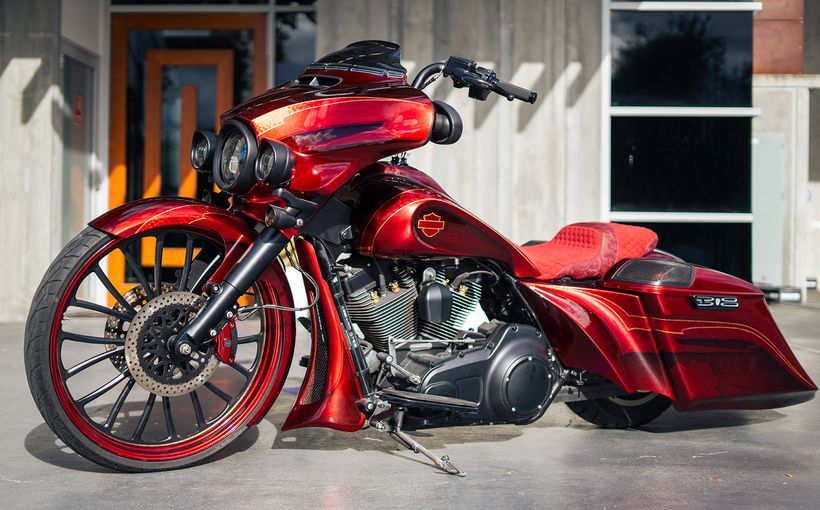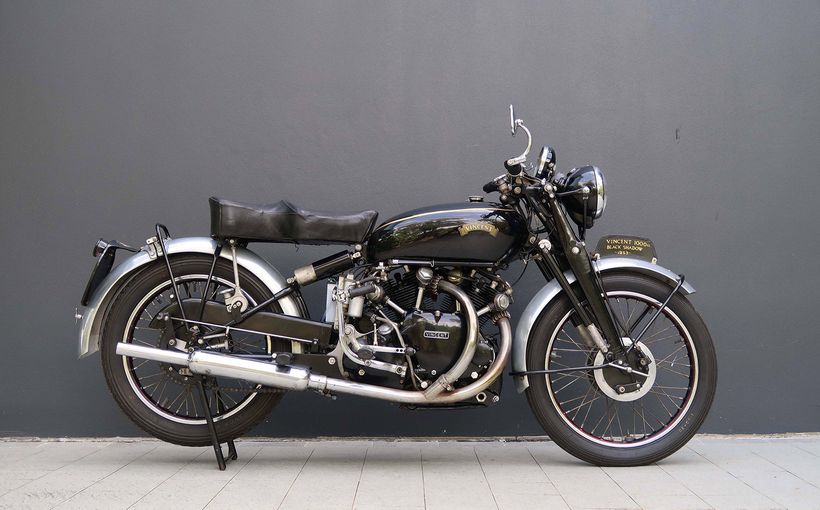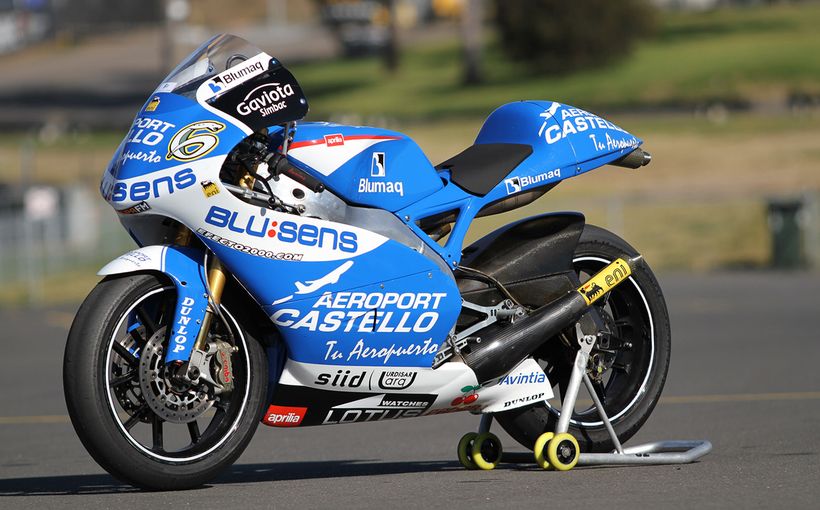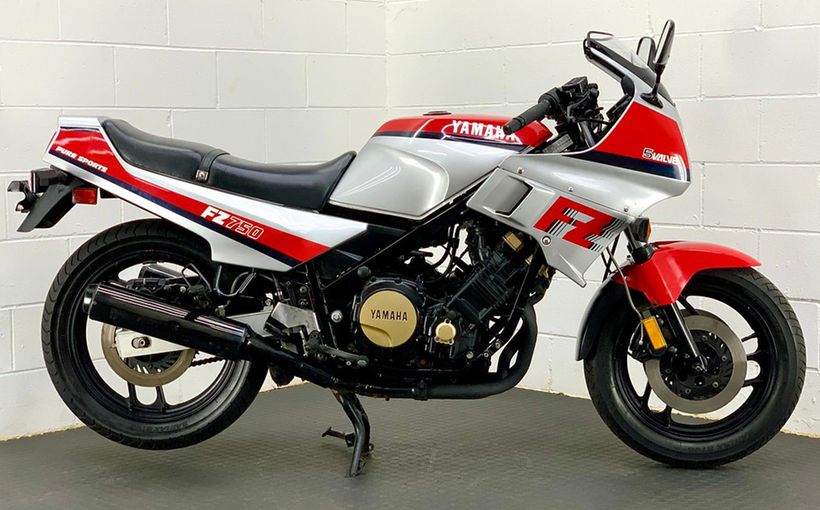Harley-Davidson Breakout vs Fat Bob 114: Fat & The Furious


So why are we comparing a Harley-Davidson Breakout 114 with a Fat Bob 114? I guess that’s the first big question and, like many ideas at MT, I’d say this one is the result of a friendly conflict of philosophy.
After your trip to the US to test the new Softail range, there was one model you seemed particularly impressed with: the Fat Bob. I was intrigued, especially after reading your reviews but, as hard as I tried, I just couldn’t fully understand the appeal. All I could see was a big, rectangular headlight on something that didn’t look like a Harley. The Breakout, however, I could sort of understand, at least from an aesthetic point of view.

 It’s interesting. The Breakout has been one of Australia’s best-selling road bikes since its 2013 introduction, which says a lot about our tastes and definition of a quintessential Harley-Davidson (in the US, the Street Glide bagger is king). The latest Fat Bob, meanwhile, is like the Obama Administration: it represents change for the 115-year-old company. Its overt zombie-apocalypse styling and subtle branding, to me, are obvious cues that Harley is desperately aiming to attract younger riders who traditionally would never consider a Harley. That includes you and I, so why do you like the Breakout?
It’s interesting. The Breakout has been one of Australia’s best-selling road bikes since its 2013 introduction, which says a lot about our tastes and definition of a quintessential Harley-Davidson (in the US, the Street Glide bagger is king). The latest Fat Bob, meanwhile, is like the Obama Administration: it represents change for the 115-year-old company. Its overt zombie-apocalypse styling and subtle branding, to me, are obvious cues that Harley is desperately aiming to attract younger riders who traditionally would never consider a Harley. That includes you and I, so why do you like the Breakout?

 Probably for the same reason more than 1000 new Aussie buyers do each year. It looks trick for a stock cruiser, thanks in part to its rake and fat-arse back tyre. That, of course, means it’s fairly impractical for twisty roads, though it’s not the sort of bike I imagine you’d buy for that. It’s more for those who want a drag-style bike for the suburbs, when they’re not on a sportsbike in the hills. “Unleash it at your favourite stoplight,” is how Harley puts it. I’m not sure that I have a favourite stoplight, but who doesn’t like undermining luxury car drivers at the lights? And you can legitimately do that on a stock version of this bike now thanks to the Milwaukee-Eight, which is startlingly quick from take-off, especially if you have the bigger 114 like we did. So what attracted you to Fat Robert? And what don’t you like about the Breakout?
Probably for the same reason more than 1000 new Aussie buyers do each year. It looks trick for a stock cruiser, thanks in part to its rake and fat-arse back tyre. That, of course, means it’s fairly impractical for twisty roads, though it’s not the sort of bike I imagine you’d buy for that. It’s more for those who want a drag-style bike for the suburbs, when they’re not on a sportsbike in the hills. “Unleash it at your favourite stoplight,” is how Harley puts it. I’m not sure that I have a favourite stoplight, but who doesn’t like undermining luxury car drivers at the lights? And you can legitimately do that on a stock version of this bike now thanks to the Milwaukee-Eight, which is startlingly quick from take-off, especially if you have the bigger 114 like we did. So what attracted you to Fat Robert? And what don’t you like about the Breakout?

 I’ll never forget the shrieking and swearing over the sounds of metal scraping on the Breakout through the twistiest roads of California during the international launch. That 34-degree front end, a 21-inch front wheel, SFA cornering clearance and a booty-big rear tyre add up to the agility of an overfed blowfly. It even scrapes through a regular roundabout, and we ground off part of the sidestand, remember? Having said that, I noticed you quickly worked out how to ride around its shortcomings and were hustling through the fast, flowing twists. Mind you, you were holding up Bob and I. Now there’s a Harley that represents change: it carves corners like no Harley cruiser ought to.
I’ll never forget the shrieking and swearing over the sounds of metal scraping on the Breakout through the twistiest roads of California during the international launch. That 34-degree front end, a 21-inch front wheel, SFA cornering clearance and a booty-big rear tyre add up to the agility of an overfed blowfly. It even scrapes through a regular roundabout, and we ground off part of the sidestand, remember? Having said that, I noticed you quickly worked out how to ride around its shortcomings and were hustling through the fast, flowing twists. Mind you, you were holding up Bob and I. Now there’s a Harley that represents change: it carves corners like no Harley cruiser ought to.
 I don’t mind a challenge but a Breakout was never going to beat a Fat Bob through the corners. In the hills, you ride the ’pegs as much as you ride the tyres. The Fat Bob, meanwhile, must have the best clearance of any Harley out there. Plus, it gets the twin discs up front with a Showa USD fork.
I don’t mind a challenge but a Breakout was never going to beat a Fat Bob through the corners. In the hills, you ride the ’pegs as much as you ride the tyres. The Fat Bob, meanwhile, must have the best clearance of any Harley out there. Plus, it gets the twin discs up front with a Showa USD fork.
I thoroughly enjoyed the whole 20 minutes I rode it before you quickly took it back. I thought it handled quite forgivingly for an 1868cc, 300kg-plus Harley, even on one of our region’s twistiest roads. Where were you? Did the Breakout break down?

 That particular section is sports/naked bike country, so I let you and Bob go and have fun, which you obviously did by the distance you pulled on me. Could the Fat Bob be Harley’s most dynamic model in recent history? It’s a very, very strong contender. Even company insiders admit their bikes needed to offer more performance, rather than just ‘look’, ‘sound’ and ‘feel’. So Harley upped the performance ante via a number of routes: a considerably lighter, stiffer chassis; more compliant suspension, and a revised version of the outstanding air-/oil-cooled Milwaukee-Eight 107 eight-valve V-twin. Cleverly, the option to upgrade to the bigger 114 is available on four models (Fat Bob, Fat Boy, Breakout and Heritage Classic), which is a no-brainer and good for business, adding between $2245 and $3000 to the purchase price (depending on the model).
That particular section is sports/naked bike country, so I let you and Bob go and have fun, which you obviously did by the distance you pulled on me. Could the Fat Bob be Harley’s most dynamic model in recent history? It’s a very, very strong contender. Even company insiders admit their bikes needed to offer more performance, rather than just ‘look’, ‘sound’ and ‘feel’. So Harley upped the performance ante via a number of routes: a considerably lighter, stiffer chassis; more compliant suspension, and a revised version of the outstanding air-/oil-cooled Milwaukee-Eight 107 eight-valve V-twin. Cleverly, the option to upgrade to the bigger 114 is available on four models (Fat Bob, Fat Boy, Breakout and Heritage Classic), which is a no-brainer and good for business, adding between $2245 and $3000 to the purchase price (depending on the model).
Not that you’re left wanting with the 107, mind you. The broadness of the 107’s torque curve is evident, and there are a few reasons for that. Apart from four valves per head (instead of two), the 45-degree V-twin has a higher compression ratio, dual-plugged heads and a whopping 50 per cent more intake and exhaust flow capacity over the old Twin Cam 103. It’s noticeably smoother – much smoother – than the 103, too, and it’s accompanied by a proper, rich rumble minus the undesirable intake and mechanical noise of yore. Then you go up a few inches to the 114 as we have here.
On paper, the 114 adds a modest 10Nm for 13-per-cent faster acceleration over the 107, according to Harley. In the real world, it feels much more, particularly in the low- and mid-range. If you’ve decided to spend $27,495 for the Fat Bob 107 or $31,250 for the equivalent Breakout, you might as well go the whole hog and opt for the 114 and Screamin’ Eagle Stage II kit ($576 plus fitment), which gives the choice of a cam upgrade for more power or torque. That’s on top of the obligatory Stage I kit ($1382), which includes intake, exhaust and tuning upgrades.
But more performance typically equates to more heat, and this is our first experience riding the Milwaukee-Eights during Aussie summer. The top of the rear cylinder head can get warm at the lights, but not uncomfortably so. Any complaints?

 I don’t have much to complain about either. Riding a Harley, for me, has never been about rocketing around corners. It’s been about feeling good, out in the air, with a big American V-twin underneath you. “I want one because I want one,” is what I heard a bloke saying to his wife when I left the Breakout out the front of the supermarket. I get that.
I don’t have much to complain about either. Riding a Harley, for me, has never been about rocketing around corners. It’s been about feeling good, out in the air, with a big American V-twin underneath you. “I want one because I want one,” is what I heard a bloke saying to his wife when I left the Breakout out the front of the supermarket. I get that.
The thing is, though, the Fat Bob, more than ever, is big-bloke Harley that actually holds its own through turns. And I think that’s exciting – could we see a new era of performance-based corner-carving American V-twins? The traditionalists would mourn, of course, and a part of me would too. But Harley is facing a challenging future – it needs to keep its traditionalists happy (while they’re alive) but also hook young riders to ensure its future. Then there’s the matter of the stiff competition coming from America’s oldest motorcycle manufacturer, Indian Motorcycle, which doesn’t have the
Harley bad-boy stigma that many of us, myself included, are a bit put off by.
It’s not an easy task.
But it’s resulting in some stonking bikes. And that can only be a good thing.

 Look no further than Indian’s FTR1200 flat tracker. I hope the production version of that doesn’t disappoint. Speaking of dynamics, a few ‘Dyna guys’ I spoke to, including Roland Sands, said they were super bummed about the demise of Harley’s harder-riding platform. But Softail no longer means soft, and I reckon the Fat Bob offers a far more engaging and dynamic ride experience than, say, a Low Rider S, which is saying something. It’s a Harley, but not as we know it.
Look no further than Indian’s FTR1200 flat tracker. I hope the production version of that doesn’t disappoint. Speaking of dynamics, a few ‘Dyna guys’ I spoke to, including Roland Sands, said they were super bummed about the demise of Harley’s harder-riding platform. But Softail no longer means soft, and I reckon the Fat Bob offers a far more engaging and dynamic ride experience than, say, a Low Rider S, which is saying something. It’s a Harley, but not as we know it.
As for the Breakout, when people sit on it, they love it: its ergonomics put you in that authoritative “F-yeah!” riding position and it’s funny to hear their voices drop an octave. If motorcycling simply means putting a smile on your face, then the Breakout delivers. It’s the quintessential Harley cruiser.
My wife liked it, mostly because it curbed my cornering. Horses for courses. I’m glad a fire has been lit under Harley’s lazy, old arse. These bikes, along with the entire 2018 Softail range, are far from being slow and cumbersome.
The Fat Bob is the Harley that’s sure to woo non-believers.
So here’s something I thought I’d never say: this is the Harley-Davidson I’d actually buy.

 I reluctantly agree and even the Fat Bob’s styling grew on me. That’s probably helped by the fact that it looks a lot better in the metal than in photos. But mostly it’s because after you’ve ridden it it’s hard to look at it the same. You really don’t need to hear this, but you were mostly right about the Fat Bob: it’s a ripper and if I could only own one bike – and it had to be a Harley – it would probably be a Fat Bob, purely because it’s the most versatile. But do we have to be monogamous? Give me a Breakout 114 and 50 other bikes, each with different yet equally narrow design briefs, and I’ll be giggling all the way to the poorhouse.
I reluctantly agree and even the Fat Bob’s styling grew on me. That’s probably helped by the fact that it looks a lot better in the metal than in photos. But mostly it’s because after you’ve ridden it it’s hard to look at it the same. You really don’t need to hear this, but you were mostly right about the Fat Bob: it’s a ripper and if I could only own one bike – and it had to be a Harley – it would probably be a Fat Bob, purely because it’s the most versatile. But do we have to be monogamous? Give me a Breakout 114 and 50 other bikes, each with different yet equally narrow design briefs, and I’ll be giggling all the way to the poorhouse.











